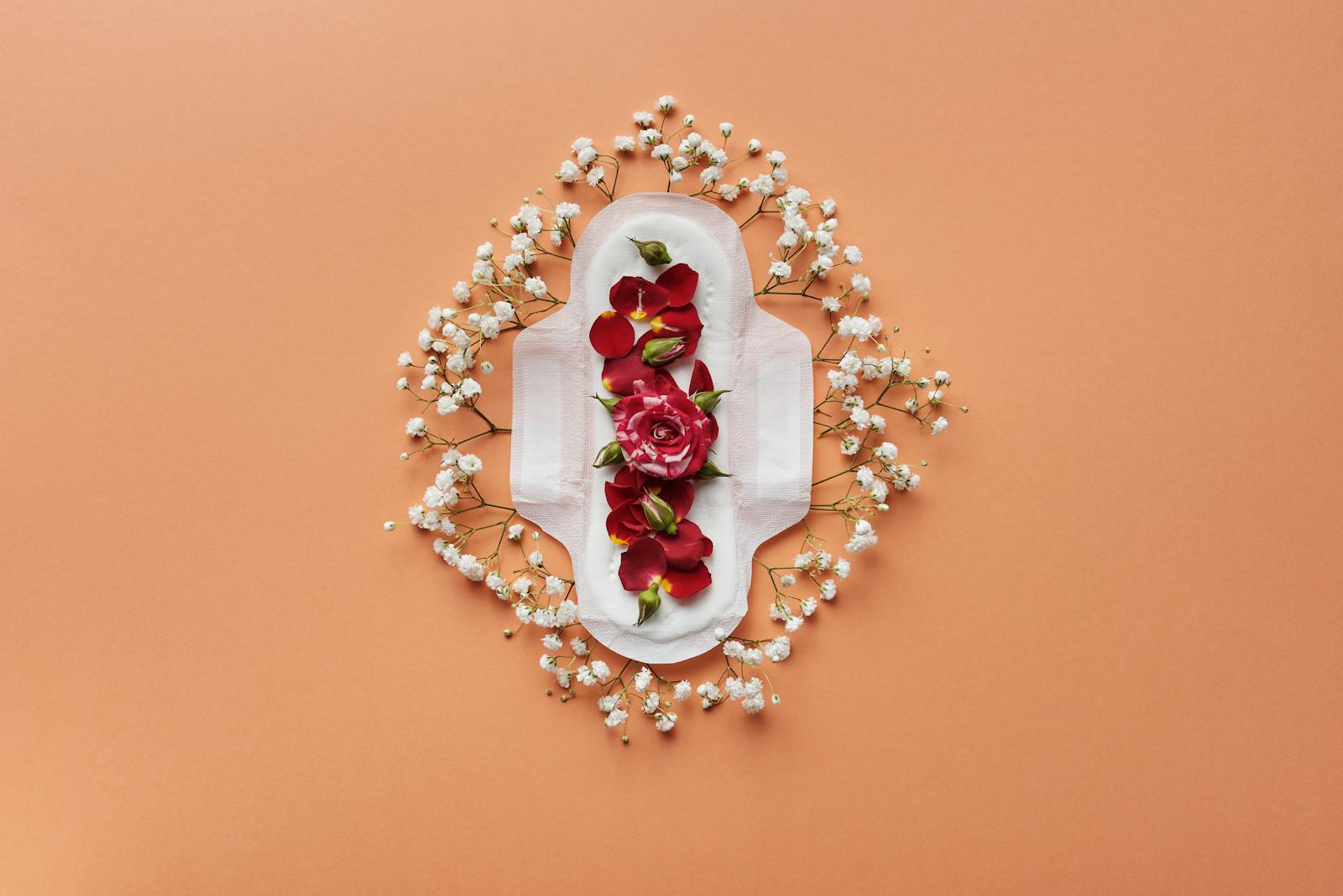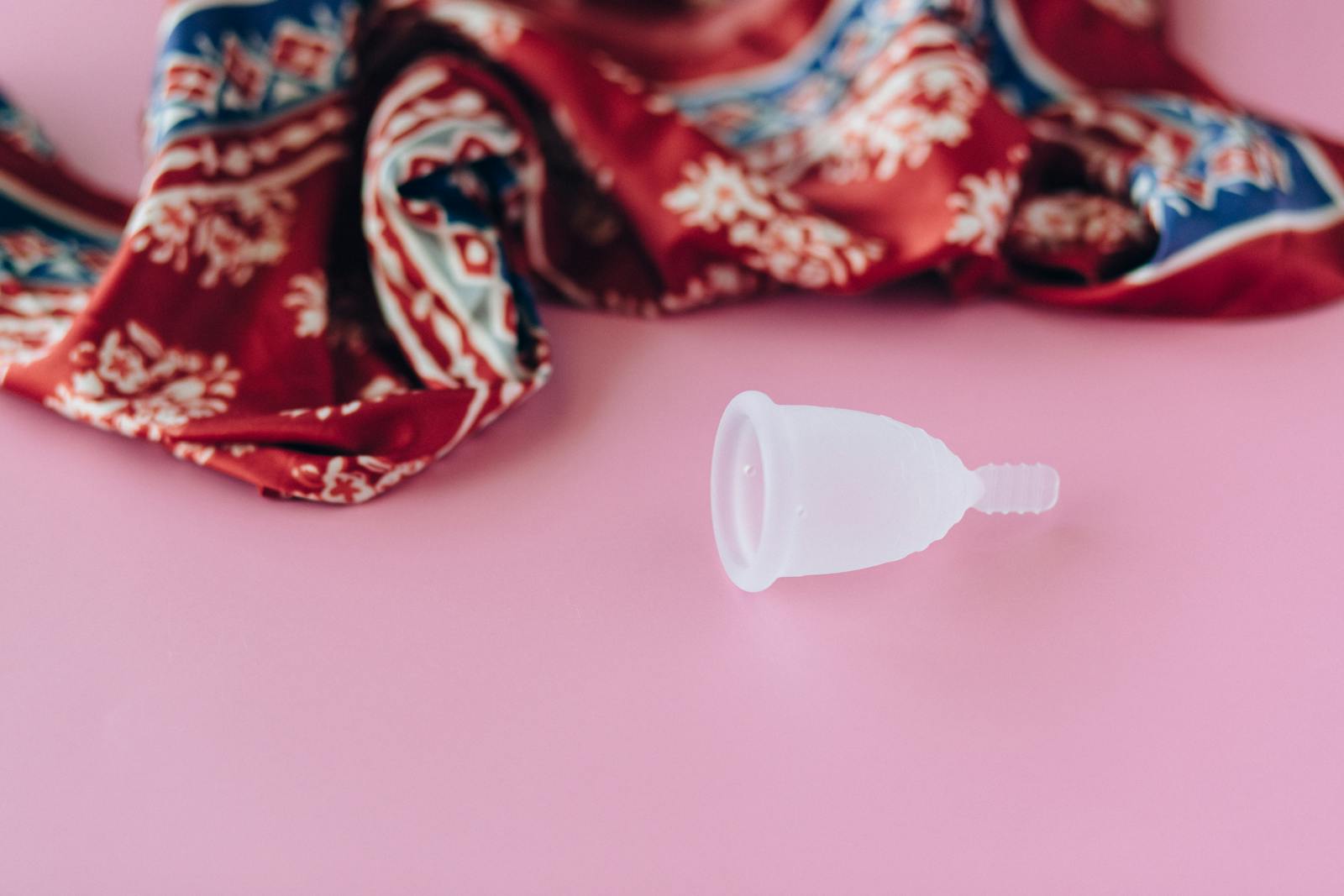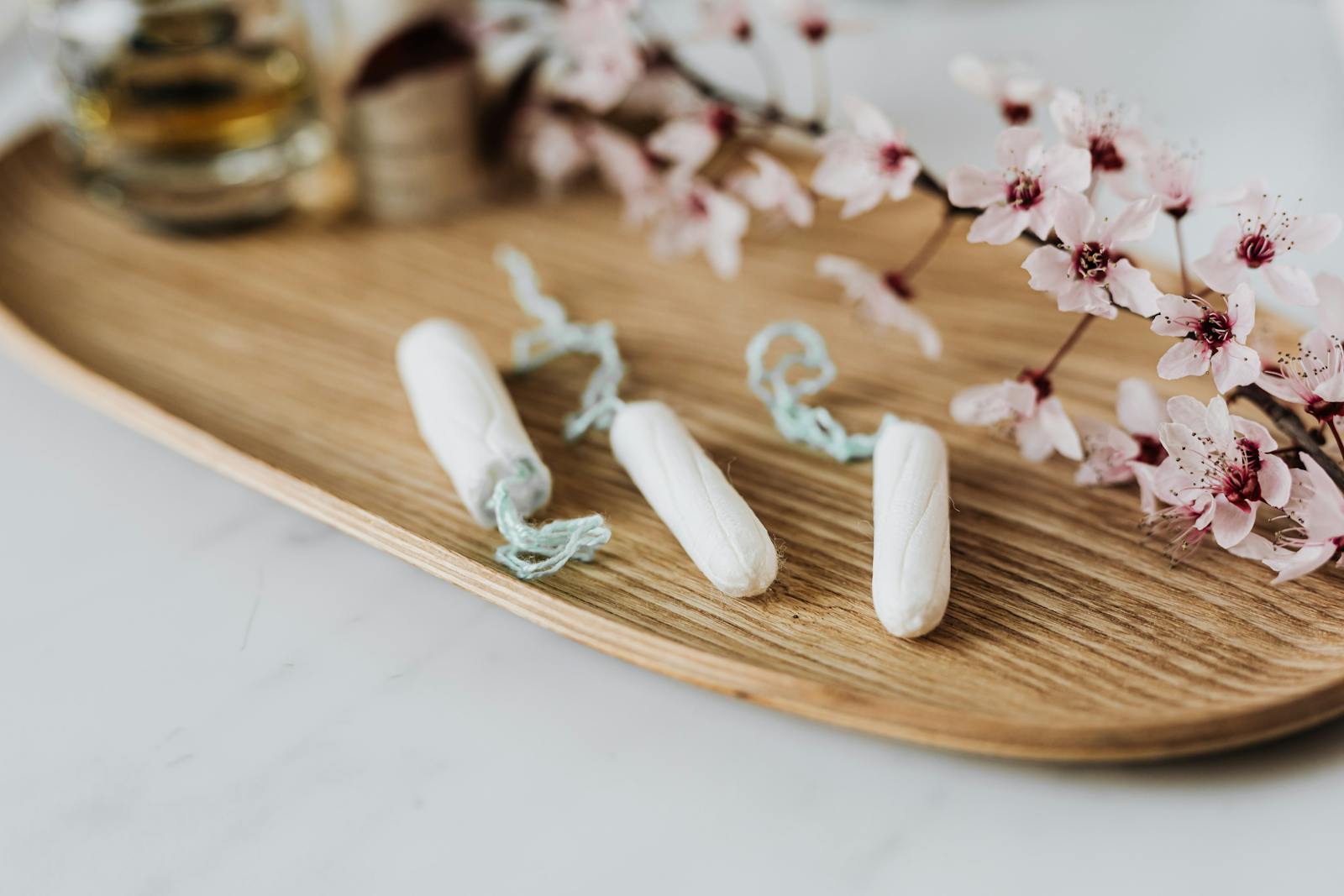Eco-Friendly Menstrual Products
There are numerous options available if you want to make your periods more eco-friendly. Whether you're motivated by a desire to protect the environment or address period poverty, there are many reasons to opt for eco-friendly menstrual products that are better for both us and the planet.
The term "sustainable period products" encompasses a range of reusable menstrual products. The most commonly used types of sustainable period products include reusable sanitary pads, reusable tampons, period underwear, and menstrual cups.
Each of these menstrual products offers its own sustainable benefits, and the choice of sanitary protection is highly individual and personal.
Cloth Sanitary Pads


Reusable pads, also known as cloth sanitary pads or cloth pads, resemble disposable pads and are attached to underwear using poppers or velcro. They are available in various levels of absorbency, ranging from panty liners to postpartum pads.
These pads are made from different materials, with the most common options being cotton, organic cotton, bamboo, or polyester. Each material offers its own benefits, and you can find more detailed information in our dedicated article on cloth pad materials and the reasons for choosing one over another.
Compared to disposable period products, cloth sanitary pads are more breathable for the skin and contain significantly less plastic (disposable products can be up to 90% plastic). Many individuals find them much more comfortable against their skin.
Drawbacks of Cloth Pads
- Increased washing: Using reusable pads means you'll need to wash them, but this can typically be done along with your regular laundry. Washing an additional 10 pads every few days doesn't add much bulk.
- Washing blood in the machine: This concern is relevant if you've never experienced leaks with your period protection. However, it's worth noting that most of us have washed bloody bedsheets or underwear at some point. Rinsing out your reusable pads can further minimize the amount of blood in the machine.
- Less convenience: This aspect may vary based on personal opinion. With disposable pads, you need to remember to purchase sanitary products every month, and unexpected early periods can leave you unprepared. Reusable pads offer the advantage of always having a stash ready to go.
- Carrying dirty pads: This is a common concern when using cloth pads. However, there are ways to make it easy to carry them while out and about. We have a dedicated article that provides guidance on how to handle cloth pads on the go, and with reusable pads, you never have to worry about finding a bin in the bathroom.
Reusable Menstrual Cup


A menstrual cup is a reusable internal menstrual product made of materials like medical-grade silicone, latex, or TPE. It is inserted into the vaginal canal to collect menstrual fluid. The great thing about menstrual cups is that you only need one cup to manage your entire period, and it can last for approximately 10 years. This makes it a cost-effective and environmentally friendly choice compared to disposable alternatives.
To find the right menstrual cup for you, there are three key pieces of information we need:
- Cervix height: Your cervix can move during your menstrual cycle, and it is at its lowest point just before your period. Knowing your cervix height helps us determine the appropriate length for your cup.
- Pelvic floor strength: Understanding your pelvic floor strength is important for cup firmness. If you have a strong pelvic floor, a firmer cup may be necessary, especially if you are physically active. A softer cup might have difficulty opening up or staying in place.
- Flow intensity: Menstrual cups are versatile and can be used for both light and heavy flow days. Unlike tampons, cups collect rather than absorb fluid. However, if you have a particularly heavy period, we can take that into account to find a cup with a higher capacity. Keep in mind that you may need to empty the cup more frequently on heavier days.
By considering these factors, we can help you find the perfect menstrual cup that suits your body and needs.
There are a few potential drawbacks to using menstrual cups:
- Finding the right fit: It can take some experimentation to find the perfect cup that fits comfortably and suits your body. This trial and error process may require purchasing different cups, which can be costly and feel wasteful.
- Not suitable for everyone: Menstrual cups are an internally worn period product, and some individuals may find them uncomfortable or have difficulty inserting and removing them. It's important to consider personal preferences and any underlying medical conditions when deciding if a menstrual cup is suitable for you.
- Changes in body and cup suitability: Your body can go through changes over time, such as after childbirth or as you age. These changes may require reassessing the fit and size of your cup to ensure optimal comfort and effectiveness.
It's important to keep these factors in mind when considering whether a menstrual cup is the right choice for you.
Period Swimwear


Period swimwear, also known as menstrual pants or period panties, resemble regular swimwear but feature a built-in absorbent pad. They come in various absorbency levels, ranging from light to super heavy flow, and can absorb the equivalent of 1 to 12 tampons' worth of blood. Period swimwear can be worn for up to 8 hours, and they often have a moisture-wicking layer to keep you feeling dry. While they provide convenience and are a popular choice among young people and teens for school days, there are some potential drawbacks to consider:
- Changing can be cumbersome: If you need to change your period swimwear, it may require removing your bottom clothing layers, which can be a bit inconvenient.
- Limited color options: Most period pants are available in black or darker colors. If you prefer wearing lighter or brighter colors, it might be challenging to find period swimwear that aligns with your style preferences.
It's essential to weigh these factors and personal preferences when considering whether period pants are the right option for you.
Reusable Tampons


Reusable tampons, typically made from cotton, closely resemble disposable tampons in appearance. They are available in different flow options, including light, regular, and heavy. If you prefer internal menstrual products but haven't found a suitable menstrual cup, reusable tampons can be a viable alternative. They function similarly to disposable tampons, complete with a string that can be adjusted for visibility. Reusable tampons are easy to use and require washing and sterilizing between periods.
Cons of Reusable Tampons:
- Limited absorbency: Reusable tampons may not be highly absorbent, making them more suitable for medium flow. If you have a particularly heavy flow, they may not provide adequate protection.
- Additional washing and sterilizing: Unlike pads that only require washing or cups that only require sterilizing, reusable tampons necessitate both washing and sterilizing. This extra step adds to the maintenance routine.
- Potential dryness and discomfort: If you've had a lighter day and the tampon isn't saturated, it can feel dry and uncomfortable when removing it.
There are various reasons why individuals choose to switch to reusable menstrual products. Some of the main reasons we have come across include:
- Environmental concerns:
Using reusable products is a much more eco-friendly choice. Disposable period products contribute to a significant amount of waste, with estimates ranging from 100-150 kg of period product waste over a person's lifetime. Additionally, approximately 500 million period products end up in landfills each month. Many disposable sanitary pads contain a high percentage of plastic, which does not break down easily in landfills. Opting for reusable products helps reduce plastic waste and its impact on the environment. The environmental impact of single-use products and the carbon footprint associated with menstruation have been discussed in greater detail in our articles.
- Economic reasons:
Period poverty is a global issue, highlighting the lack of access to clean and adequate sanitary products. It is estimated that 2 million girls have missed at least part of a school day due to their periods, and 1 in 10 UK teens cannot afford period products. Menstruating with disposable products can cost around £10 per month. In comparison, building a stash of cloth pads, which can last 5-7 years, typically costs around £100. Switching to reusable products can provide long-term cost savings and help address period poverty.
- Menstrual health reasons:
Some disposable products contain a high amount of plastic, with the plastic content of a single disposable pad equivalent to five plastic bags. Disposable products often contain various toxic chemicals, some of which are added to mask odors. Many women find disposable pads uncomfortable and irritating to their skin. Transitioning to more eco-friendly materials like organic cotton can help alleviate such irritation. There is a growing movement advocating for plastic-free periods, promoting healthier and more sustainable menstrual health practices.
There is a growing trend towards eco-friendly disposable products such as organic tampons, reusable tampon applicators, and biodegradable tampon applicators. While these options contribute to reducing plastic waste, they do not completely eliminate period waste. Many biodegradable products require specific environments to break down, which may not be readily available in UK landfill sites. If you are interested in using biodegradable feminine hygiene products, I recommend researching the composting requirements for proper disposal. However, using reusable alternatives like reusable pads, tampons, period pants, or menstrual cups is a more sustainable option that helps minimize unnecessary waste.
Among the reusable options, menstrual cups are considered the most sustainable choice. A single menstrual cup can be used for all flow levels and can last for 8-10 years, making it highly sustainable. While no product has a zero carbon footprint, research suggests that using a menstrual cup only produces 0.4% of CO2 emissions compared to disposable alternatives. However, it's important to note that a menstrual cup may not be suitable for everyone, and it's essential to consider what will work best for your everyday life. Remember, any reusable product is better for the environment than single-use options.
If you're unsure about which option would suit you best or how to build a sustainable collection of period protection, I recommend filling out our Menstrual Product Recommendation Questionnaire. It will help you discover the period care options that align with your needs and preferences.




















































































































Leave a comment
Please note, comments need to be approved before they are published.